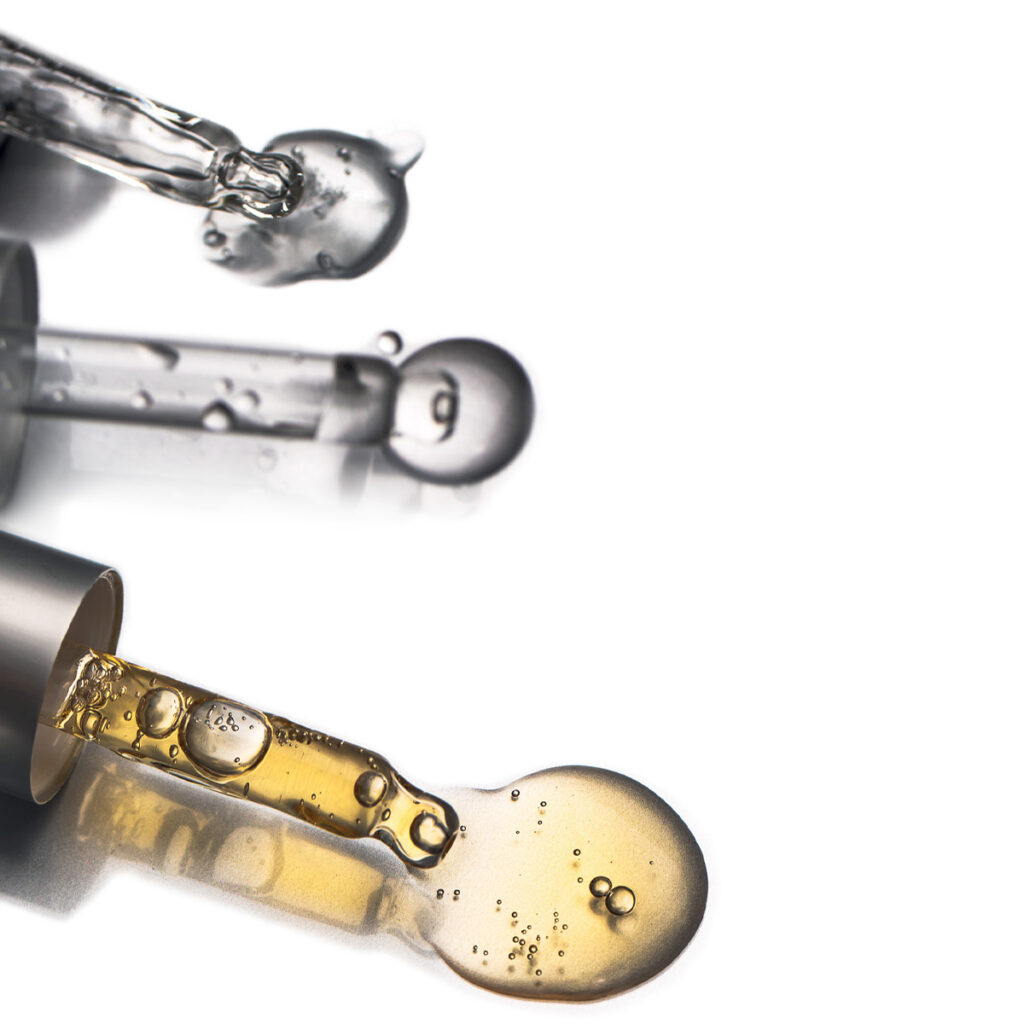Livraison offerte à partir de 55€ d'achat

Welcome to the VIVACY BEAUTY blog. Discover a range of different subjects about anti-ageing and aesthetic medicine.
Hyaluronic acid

Discovered in the vitreous humour of bull’s eyes by biochemists Karl Meyer and John Palmer in 1934, the moisturising and healing properties of hyaluronic acid were only studied in the 1980s. Due to its glassy and clear aspect, the term hyaluronic is derived from the Greek “hyalos” meaning “glass”.
Naturally found in many of our body’s tissues and fluids, the hyaluronic acid molecule regulates the skin’s hydration, ensuring firmness and elasticity. Its lubricating action also prevents bone surfaces from rubbing against each other and is therefore particularly effective in treating osteoarthritis of the knee. 12 g per 60 kg is the average amount of hyaluronic acid in an adult’s body.
As an essential component of the dermis, hyaluronic acid maintains the structure of the skin’s layers. By filling the intercellular spaces, it is responsible for the plumpness of the skin. However, it is estimated that by the age of 50, our body has only 50% hyaluronic acid left. Skin ageing, whether linked to genetic factors or to our environment, significantly speeds up the reduction of our hyaluronic acid capital. Tissues gradually become looser, the face becomes hollower, the skin dries out and the first wrinkles appear.
Hyaluronic acid, whatever its form, addresses three issues: dehydration, the development of wrinkles and fine lines and the loss of volume. Since the late 1990s, the volumizing properties of this molecule have been exploited in the field of aesthetic fillers.
A distinction is usually made between two types of hyaluronic acid:
- High molecular weight hyaluronic acid: by forming a protective filter, it mainly acts on the surface of the epidermis and therefore does not enter the skin barrier. It is therefore suitable for lightly damaged skin.
- Low molecular weight hyaluronic acid: the lower the molecular weight, the deeper and more significant the action on wrinkles. It stimulates the collagen production and thus prevents skin slackening.
1. Hyaluronic acid injections
When locally injected into wrinkles by aesthetic physicians, the results are immediate. Less allergenic than collagen, synthetic hyaluronic acid restores the skin while preserving facial expressions. Nevertheless, to obtain lasting results, injections should be renewed every 3 to 18 months.
2. Dermo-cosmetic skincare products based on hyaluronic acid
Although the effects of hyaluronic acid injections are temporary, applying the dermocosmetic skincare products by Laboratoires Vivacy can prolong them. By stimulating the natural process of cell regeneration, the Vivasôme® complex in the Cell Shot serum deeply moisturises the skin and reduces the signs of ageing. Acting as a humectant, hyaluronic acid absorbs water and keeps the skin hydrated.
Hyaluronic acid orally administered :
Hyaluronic acid pills to deeply moisturise the skin and tighten the dermis supplement and strengthen the effects of an anti-ageing routine. Unlike hyaluronic acid injections and skincare products, pills have a more global effect.
3. Balm, cream, serum, mask… Which differences?
- Balm: Balm soothes and deeply nourishes the skin. Usually thicker than a cream, it protects dry and irritated skin.
- Cream: Its soft, creamy texture smoothes and intensely moisturises the epidermis.
- Serum: The fluid texture of a serum is instantly absorbed. Combined with a moisturiser, it reduces the absorption time.
- Mask: Applied in a more or less thick layer for a given period of time, a mask enriched with hyaluronic acid firms and tones the skin. When used on a regular basis, the mask considerably improves the effects of an anti-ageing routine.